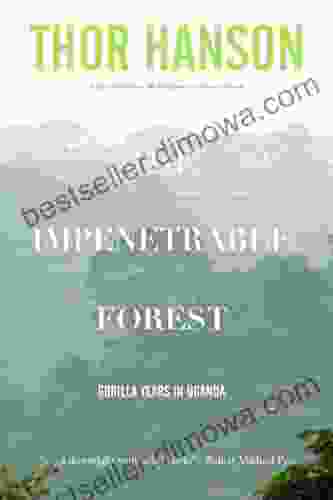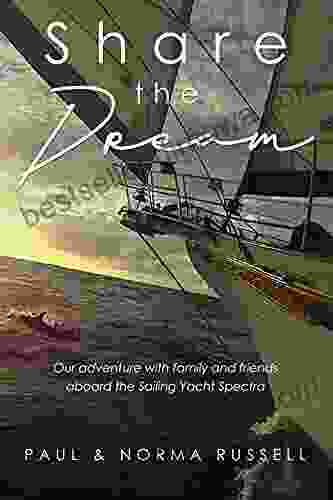Creative Nature Photography: Essential Tips and Techniques

Nature photography is a beautiful and rewarding genre that allows you to capture the beauty of the natural world. However, it can also be a challenging genre to master, as there are many factors to consider, such as composition, lighting, and post-processing.
5 out of 5
| Language | : | English |
| File size | : | 33933 KB |
| Text-to-Speech | : | Enabled |
| Screen Reader | : | Supported |
| Enhanced typesetting | : | Enabled |
| Print length | : | 160 pages |
| Paperback | : | 390 pages |
| Item Weight | : | 1.34 pounds |
| Dimensions | : | 6.14 x 0.88 x 9.21 inches |
If you're looking to improve your nature photography skills, then this guide is for you. In this guide, we'll cover everything you need to know about nature photography, from the basics of composition to advanced techniques for capturing stunning images.
Chapter 1: Composition
Composition is one of the most important elements of photography. It's the way you arrange the elements in your scene to create a visually appealing image. There are many different compositional techniques that you can use, such as the rule of thirds, leading lines, and negative space.
In nature photography, composition is especially important because you often have to work with the elements that are available to you. You can't move the trees or the mountains, so you need to learn how to use them to your advantage.
Here are a few tips for composing nature photographs:
- Use the rule of thirds to create a balanced image.
- Use leading lines to draw the viewer's eye into the scene.
- Use negative space to create a sense of depth and drama.
- Experiment with different angles and perspectives.
- Don't be afraid to crop your images to improve the composition.
Chapter 2: Lighting
Lighting is another important element of photography. It can make or break an image, and it's especially important in nature photography, where the light is constantly changing.
There are three main types of lighting in nature photography: direct sunlight, indirect sunlight, and open shade.
- **Direct sunlight** is the harsh light that comes from the sun. It can create harsh shadows and overexposed highlights, but it can also be used to create dramatic images.
- **Indirect sunlight** is the light that is reflected off of clouds or other objects. It's softer and more flattering than direct sunlight, and it's ideal for portraits and close-ups.
- **Open shade** is the light that is found in the shade of trees or other objects. It's even softer than indirect sunlight, and it's ideal for shooting in harsh lighting conditions.
The best time to shoot nature photographs is during the golden hours, which are the hours around sunrise and sunset. During these times, the light is softer and more flattering, and the colors are more vibrant.
Chapter 3: Post-Processing
Post-processing is the process of editing your images after you've taken them. It can be used to improve the exposure, contrast, and color of your images, and to remove unwanted elements.
There are many different software programs that you can use to post-process your images, such as Adobe Photoshop and Lightroom. There are also many different tutorials available online that can teach you how to use these programs.
Here are a few tips for post-processing nature photographs:
- Adjust the exposure to make your images brighter or darker.
- Adjust the contrast to make the difference between the light and dark areas of your images more pronounced.
- Adjust the color to make your images more vibrant or muted.
- Remove unwanted elements from your images, such as dust spots or blemishes.
- Crop your images to improve the composition.
Chapter 4: Advanced Techniques
Once you've mastered the basics of nature photography, you can start to experiment with more advanced techniques, such as:
- **Long exposure photography** can be used to create ethereal images of moving water or clouds.
- **Macro photography** can be used to capture the details of small creatures and plants.
- **Wildlife photography** can be used to capture images of animals in their natural habitat.
- **Landscape photography** can be used to capture images of vast and expansive landscapes.
These are just a few of the many advanced techniques that you can use to improve your nature photography skills. With practice, you'll be able to capture stunning images of the natural world that will amaze your friends and family.
Nature photography is a beautiful and rewarding genre that allows you to capture the beauty of the natural world. By following the tips and techniques in this guide, you'll be able to take your nature photography skills to the next level and capture stunning images that will last a lifetime.
5 out of 5
| Language | : | English |
| File size | : | 33933 KB |
| Text-to-Speech | : | Enabled |
| Screen Reader | : | Supported |
| Enhanced typesetting | : | Enabled |
| Print length | : | 160 pages |
| Paperback | : | 390 pages |
| Item Weight | : | 1.34 pounds |
| Dimensions | : | 6.14 x 0.88 x 9.21 inches |
Do you want to contribute by writing guest posts on this blog?
Please contact us and send us a resume of previous articles that you have written.
 Book
Book Novel
Novel Page
Page Chapter
Chapter Text
Text Story
Story Genre
Genre Reader
Reader Library
Library Paperback
Paperback E-book
E-book Magazine
Magazine Newspaper
Newspaper Paragraph
Paragraph Sentence
Sentence Bookmark
Bookmark Shelf
Shelf Glossary
Glossary Bibliography
Bibliography Foreword
Foreword Preface
Preface Synopsis
Synopsis Annotation
Annotation Footnote
Footnote Manuscript
Manuscript Scroll
Scroll Codex
Codex Tome
Tome Bestseller
Bestseller Classics
Classics Library card
Library card Narrative
Narrative Biography
Biography Autobiography
Autobiography Memoir
Memoir Reference
Reference Encyclopedia
Encyclopedia C G Drews
C G Drews Bob Hocking
Bob Hocking Cody Assmann
Cody Assmann Bernard Knight
Bernard Knight Pamela Malcolm
Pamela Malcolm Stephen Landry
Stephen Landry Stephanie Hrehirchuk
Stephanie Hrehirchuk Bill Peterson
Bill Peterson Bob Costas
Bob Costas Paul Chrystal
Paul Chrystal Mike Shropshire
Mike Shropshire Terry Hodges
Terry Hodges Bernadette Spaulding
Bernadette Spaulding Anni Sennov
Anni Sennov Sean J Savage
Sean J Savage Heather Mullaly
Heather Mullaly Bernice Selden
Bernice Selden Bob Halloran
Bob Halloran Bernard F Schutz
Bernard F Schutz Pat Rhodes
Pat Rhodes
Light bulbAdvertise smarter! Our strategic ad space ensures maximum exposure. Reserve your spot today!

 Fredrick CoxMy Walt Disney World Career In Words And Pictures: Unlocking the Magic Behind...
Fredrick CoxMy Walt Disney World Career In Words And Pictures: Unlocking the Magic Behind...
 Gerald ParkerMaster the Art of Research with "Junior Research Fellowship and Assistant...
Gerald ParkerMaster the Art of Research with "Junior Research Fellowship and Assistant... Felix CarterFollow ·5.3k
Felix CarterFollow ·5.3k Tom HayesFollow ·9.6k
Tom HayesFollow ·9.6k Jarrett BlairFollow ·6.1k
Jarrett BlairFollow ·6.1k Fletcher MitchellFollow ·18.9k
Fletcher MitchellFollow ·18.9k Shannon SimmonsFollow ·7.1k
Shannon SimmonsFollow ·7.1k Duane KellyFollow ·9.3k
Duane KellyFollow ·9.3k Benjamin StoneFollow ·5.4k
Benjamin StoneFollow ·5.4k Marcus BellFollow ·3.8k
Marcus BellFollow ·3.8k

 Elton Hayes
Elton HayesFly Fishing the Rapid River: A Journey into Angling...
Nestled amidst towering...

 Henry Green
Henry GreenFirst Field Guide to Mushrooms of Southern Africa: Your...
Unveil the Hidden...

 Ben Hayes
Ben HayesWhen the Lights Went Out All Over the World: A Literary...
In the annals of...

 Frank Mitchell
Frank MitchellUnveiling the Secrets of the Impenetrable Forest: My...
An Enchanting...

 Junot Díaz
Junot DíazUp Close: Rachel Carson's Pioneering Legacy
A Woman of Vision and...

 Juan Butler
Juan ButlerUnveiling the Secrets of Turkey's Ancient Sites: A...
Turkey, a land of rich...
5 out of 5
| Language | : | English |
| File size | : | 33933 KB |
| Text-to-Speech | : | Enabled |
| Screen Reader | : | Supported |
| Enhanced typesetting | : | Enabled |
| Print length | : | 160 pages |
| Paperback | : | 390 pages |
| Item Weight | : | 1.34 pounds |
| Dimensions | : | 6.14 x 0.88 x 9.21 inches |








